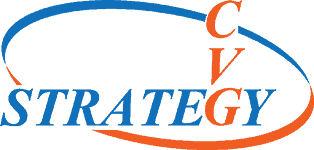
Pyroshock MIL-STD-810 Method 517 is a test to evaluate equipment’s ability to withstand mechanical transients caused by the detonation of devices such as explosive bolts and Flexible Linear Shape Charges (FLSC).
Characteristics of Pyroshock Events
Pyroshocks can produce excitation in a broad range of frequencies. These typically range from 100 Hz to 1 MHz with a duration of 50 microseconds to 20 milliseconds. This is of special concern for electronic equipment as the excitation at high frequencies will be comprised of wavelengths that can induce failures and unexpected behaviors from micro-electronic components.
The effects of pyroshock can include the aforementioned failure of micro-electronic devices. It can also cause relay chatter, and failures due to cracks and fractures in crystals, epoxies, ceramics, or glass envelopes.
Pyroshock Zones
Levels of expected exposure to pyroshock events are classified in the test standard into near field, mid field, and far field. Near-field testing requires testing above 10,000 Hz and amplitudes greater than 10,000 g’s. Mid-field requires pyroshock tests to include frequencies between 3,000 Hz and 10,000 with amplitudes less than 10,000 g’s. Far-field testing is limited to frequencies no higher than 3,000 Hz and less than 1,000g’s.
Procedures for Pyroshock
As of MIL-STD-810H change 1, the pyroshock method includes five different procedures:
- Procedure I – Near-Field with an Actual Configuration requires testing with actual intended platform of the test item and a specified explosive device.
- Procedure II – Near-field with a Simulated Configuration involves mounting the test item on a steel plate to minimize testing costs.
- Procedure III – Mid-field with mechanical test device incorporates the use of laboratory test equipment in lieu of explosive devices. These devices include shock machines used in MIL-DTL-901 Shipboard Shock or Resonant Beam Shock Machine. Shocks should be applied to all three orthogonal axes.
- Procedure IV – Far-field with a mechanical device as in Procedure III with reduced severity. Shocks should be applied to all three orthogonal axes.
- Procedure V – Far-field with an Electrodynamic Shaker uses the same test devices used for vibration testing as in Method 514.
Considerations for Pyroshock
It is advisable to check with test facilities as to the intended accelerometers to be used in testing, especially in the near field. It may be advisable to employ more sophisticated measurement devices to prevent loss or distortion of measurements. In such cases the use of laser Doppler devised may be advisable.
When using shock machines for mid-field and far-field testing, threaded accelerometers are advised, as adhesives used to mount accelerometers during normal shock testing will not withstand the higher frequencies encountered in pyroshock and break free during testing.
Detailed Environmental Test Plan Templates
CVG Strategy offers EZ Test Plan Templates for MIL-STD environmental (climatic/dynamic) and EMI/EMC test documentation. Our Detailed Environmental Test Plans (DETP)s are written as specified in Department of Defense standard MIL-STD-810 Task 405. They are available for specific applications such as Ground Mobile, Ground Stationary, and Shipboard Controlled, Shipboard Uncontrolled, and Aircraft Military.
These DETPs include appropriate methods, (such as Pyroshock MIL-STD-810 Method 517) addendums for product specific information, test labels for photo identification and data sheets for collection of required data. Profile (LCEP).
Our Electromagnetic Interference Test Plans are written as specified in MIL-STD-461. They contain the test methodology, addendums for product specific information, test labels for photo identification and data sheets. These plans are available for procedures listed in MIL-STD-461 and are also available for MIL-STD-1275, MIL-STD-704, and MIL-STD-1399-300.
Custom Test Plans are also available for applications not covered in the EZ Test Plan offerings. These plans can be written for any number of applications and their relevant standards.
MIL-STD-810 Training Classes
CVG Strategy MIL-STD-810 classes will provide you with the ability to develop and conduct an environmental test program. Our two day course not only provides you with valuable information about climatic and dynamic test methods but also includes training in the methodology to correctly apply test tailoring relevant to the test item’s expected life cycle.
This course is available online or onsite. Ample time is available for questions and comments so that participants are encouraged to keep engaged. Check here for our online Training Registration Schedule.
Put CVG Strategy’s Experience to Work for You
Companies of all sizes, from start up to established product developers, face challenges in product test and evaluation. This can particularly be the case when a product is developed for a new market sector or expanding sales internationally.
Properly tested products prevent costly product recalls, product redesign, and product liability. They maintain customer satisfaction and keep your company’s reputation in good standing. Contact CVG Strategy to see how our services can assist your engineering team with Pyroshock MIL-STD-810 Method 517 or any other MIL-STD-810 test and evaluation concern.


